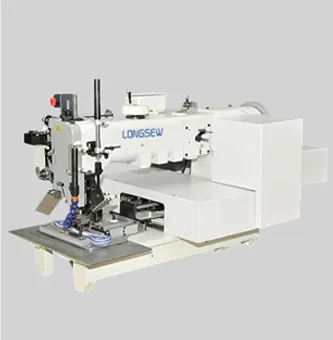lockstitch
The Art and Science of Lockstitch A Seamstress's Essential Tool
In the world of sewing, the lockstitch is a fundamental technique that has transformed the art of garment making and textile crafting. This method, which interlocks two threads—typically one above and one below the fabric—serves as a staple for both amateur and professional seamstresses alike. With its historical significance, mechanical ingenuity, and modern applications, the lockstitch remains a vital component of the sewing landscape.
The origins of the lockstitch can be traced back to the mid-19th century, primarily credited to Elias Howe, an American inventor. In 1846, Howe patented the first successful sewing machine that employed the lockstitch mechanism. This groundbreaking invention not only automated the sewing process but also introduced an unprecedented level of precision and speed. Prior to this, hand sewing was the norm, often resulting in inconsistent and time-consuming outputs. Howe’s invention revolutionized the textile industry, leading to the rapid production of garments and other fabric-based products.
At its core, the lockstitch is crafted using a sewing machine that uses two threads to create a single stitch
. The top thread, fed through the needle, descends into the fabric, while the bottom thread, held on a bobbin, loops around the top thread to create a lock. This interlocking mechanism produces a strong and durable seam, making it especially suitable for various types of fabrics and applications. One of the key benefits of the lockstitch is its versatility; it can be used on everything from delicate silks to heavy denim, making it an essential stitch for any sewing project.lockstitch

As sewing machines evolved, so did the lockstitch technology. Modern machines offer a range of features that enhance the lockstitch process. Many commercial sewing machines are equipped with adjustable tension settings, allowing sewists to manipulate how taut the threads are, thereby affecting the final appearance and strength of the stitch. Additionally, machines now come with various stitch lengths and widths, enabling crafters to experiment with decorative stitching styles while retaining the fundamental lockstitch capabilities.
The lockstitch also has practical implications beyond simple garment construction. In the fashion industry, it is used to create intricate designs, ensuring that hems are secure and that seams can withstand the wear and tear of daily use. Quilters appreciate the lockstitch for its reliability, as it holds layers of fabric together without puckering, creating a smooth and polished finish. The durability of a lockstitch seam means garments can last longer, thereby promoting sustainable practices in fashion by reducing waste.
Moreover, the lockstitch is a crucial part of the ongoing trend towards customization and personalization in the textile industry. As sewing enthusiasts experiment with their creations, the ability to master the lockstitch expands their design capabilities. Whether creating their own clothing, home decor, or artisanal crafts, the knowledge of how to use the lockstitch effectively opens up a world of creative possibilities.
In conclusion, the lockstitch is not just a basic sewing technique; it is a testament to the evolution of textile craftsmanship. As it bridges the gap between art and engineering, this stitch has enabled countless individuals to express their creativity through fabric. As technology continues to advance, the lockstitch will undoubtedly adapt, yet its core principles will remain unchanged. It stands as a cornerstone of sewing that ensures every creation is stitched with care, precision, and durability. Whether you're a novice seeking to learn the trade or an experienced seamstress refining your craft, mastering the lockstitch will always be an invaluable skill in your sewing arsenal.
-
Boost Production Efficiency with a Pattern Sewing MachineNewsAug.29,2025
-
Industrial Excellence with the Best Heavy Duty Sewing MachineNewsAug.29,2025
-
Precision and Power with the Best Pattern Sewing MachineNewsAug.29,2025
-
Reliable Bulk Packaging Starts With the Right FIBC Sewing MachineNewsAug.29,2025
-
Advanced Packaging Solutions: Elevate Productivity with Jumbo Bag Sewing Machine and Industrial Stitching EquipmentNewsAug.29,2025
-
High-Performance Solutions for Bulk Packaging: FIBC Sewing Machine and MoreNewsAug.29,2025
-
Maximize Efficiency with an Industrial Cylinder Arm Sewing MachineNewsAug.28,2025


























